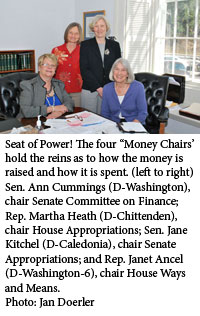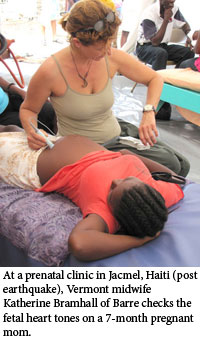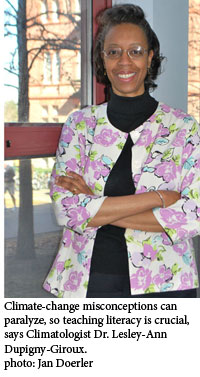Multiple Systems Atrophy (MSA):
The Story Of Christine Tissot
No one I know had ever heard of MSA. I bet you haven’t either. Neither had my friend Christine Tissot. Not until she learned of her own diagnosis two years ago. There is no test for MSA, no known cause or risk factors, no remission, no cure.
Diagnosis can only be done symptomatically and is often confused with other neurological diseases such as Parkinson’s and Multiple Sclerosis or ALS (Amyothropic Lateral Sclerosis, or Lou Gehrig’s disease). Treatment of symptoms requires the expertise of dozens of doctors and healthcare workers from different fields.
Multiple System Atrophy is a rare and rapidly progressive neurodegenerative disorder that is associated with the loss of nerve cells in several parts of the brain that affects all body systems we take for granted. It strikes less than five people in 100,000; their average lifespan from onset is less than eight years.
Symptoms occur and systems decline progressively at varying times, either alone, in combination, or in totality. The effects include: loss of balance, muscle coordination and strength; fainting and dizziness due to sudden severely low blood pressure; speech and swallowing difficulties; sleep problems; impotence; breathing impairment; dry mouth and skin; rigidity; vocal cord paralysis; tremors; and bladder and bowel problems. MSA does not affect memory, intelligence, or cognitive ability.
Read the full article |
|
A Call for Women’s Leadership in Vermont
On town meeting day, 2011, Montpelier voters made history by electing a majority of women to the city council. That night, I was elected as its newest member. During my campaign, I’d often been shocked. Several nights a week, I would knock on doors in my district, or go to candidate house parties, stunned by the questions. Instead of talking about paving our roads, or fixing the housing crisis, most people wanted to chat about how old I was; if my husband approved of my candidacy; and who would take care of my children on the nights I had meetings.
I spent the months before election, convincing constituents I was 36 years old, and my husband did brush the kids’ teeth before bed. At the time I wondered if similar questions were being asked of my opponent, a single, 20-something male. It was 2011, right?
Going the Distance
Women might not be fighting for the right to vote, the right to own property, or access to education and a career, but we remain in a battle for pay equality, reproductive rights, and ending discrimination. Federal and state laws discourage discrimination; it still exists.
Read the full article |
 |
Vermont Rep. Janet Ancel: Quietly Making History
In an era when women comprise nearly half of all new law school students, embody 25 percent of all federal judges, and hold two seats on the U.S. Supreme Court bench, it might seem ancient history to recall when women “just didn’t” become lawyers.
Yet that was the prevailing view when Janet Ancel graduated from Stanford University in 1967. She’d always been interested in the law, but even she accepted the common wisdom of the time. Women didn’t become lawyers; instead Ancel earned a major in English and American literature, and minored in history and philosophy. She came back home to Montpelier and got a job as a social worker for Vermont’s state hospital in Waterbury.
It was a good job and provided valuable—indeed, life-changing—experience. More on that later.
Read the full article |
 |
The Power of Midwifery at Home and Around the World
Vermont’s midwives celebrate the joys of helping women transition to the role of mother. “It’s a total honor to be part of this time in a family’s life,” says Marti Churchill, a certified nurse midwife at Fletcher Allen Health Care in Burlington. “It’s very, very special. It never loses its magic.”
This year is the 20th anniversary of the International Day of the Midwife, celebrated around the world on May 5. But Vermont’s midwives are also girding themselves for the many continuing challenges of remaining a vital facet of safe birthing options for Vermont mothers—and for mothers in need around the globe.
Midwifery in Vt. Hospitals
The practice of midwifery within FAHC was established in 1968 by Claire Linthilac, who had served as a midwife in China. Five of Vermont’s 50 Certified Nurse Midwives, or CNMs—nurses with advanced training in midwifery—engage in a broad practice at FAHC.
Well-woman OB/GYN, family planning and obstetrics, antepartum and birth. We do all of it,” Churchill says. A CNM is the first contact a pregnant woman has with the hospital. “If a woman comes to us they are guaranteed a midwife at their birth,” Churchill says. “They see a primary midwife for continuity of care, then later in pregnancy rotate through so they get to know all of us. We cover in 24-hour call shifts. The day after labor, we are always off, and a fresh midwife who has slept all night is there to attend to the moms.”
Read the full article |
 |
State Climatologist Makes Weather Clearer
Why did Lake Champlain flood so badly last spring? How unusual was that summer drought? Why was the rainfall during Irene so intense? How are we to make sense of all this?
The weather certainly has been strange lately. As we emerge from the “year of no winter,” following the year of record-breaking spring floods, a summer drought, the devastation of Tropical Storm Irene, and that early heavy snow storm last October, most of us are wondering: What is going on?
Fortunately, Vermont has someone working at the state level to help us out. Dr. Lesley-Ann Dupigny-Giroux is a professor of geography at UVM and also serves as our state climatologist. In that capacity, one of her important roles is enhancing “climate literacy” for Vermonters of all ages. She facilitates dialogue among departments of state government that deal with climate and weather, such as transportation, agriculture, and emergency management agencies. Because of her expertise in historical climate trends in our region, she can put today’s weather events within their long-term climate context.
One would not at first suspect her special interest is in hazardous events. Her calm demeanor and quiet voice belie her work around the state, helping to describe and quantify the various causes and impacts of floods, droughts, ice storms and other severe weather on Vermont’s natural landscape and built environment.
It’s also surprising to learn our Vermont State Climatologist grew up in Trinidad, a Caribbean island northeast of Venezuela; its tropical climate averages a temperature of 78.8 degrees. But then again, there is a parallel between the two places. Trinidad has its share of tropical storms, significant erosion, and is often plagued by drought. Vermont’s climate, while much colder, is similarly shaped by diverse geographic and atmospheric conditions. Both are affected by mountain ranges, which create distinct microclimates in different regions.
Read the full article |
 |
Social Media Unites Women
Women created a tsunami of electronic backtalk around the Komen/Planned Parenthood controversy and Rush Limbaugh’s campaign to make birth control dirty. It was no accident. Women are organizing with a new set of electronic tools: facebook, twitter, blogs, youtube videos and blog radio you can stream. Two coalitions are particularly promising for their media savvy.
Women United (or in some cases, Unite Women) is organizing a We Are Women march in all 50 states on April 28, 2012. They plan to march on Washington D.C. sometime in September. They have the endorsement of the Coalition of Labor Union Women, The Coffee Party, USA, The National Organization for Women, The Nation magazine and Ihollaback. The latter connects iPhone and Droid apps to 311 lines to help end street harassment in 34 cities, 14 countries and 8 languages.
Read the full article |
|